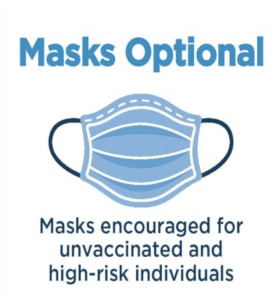COVID-19 Protocol – Updated 10/20/2024
COVID-19 / Coronavirus Prevention Protocol Practiced Here
Current Community Level – Low – Medium
POLICY/ Protocols
COVID-19 Protocols
Face Mask Policy
- O’Connor Hearing Center Mask Policy follows CDC Center for Disease Control
- Per the local Community Level of COVID-19 Washtenaw Health Department
- Audiologists will wear a facemask during your visit on request.
“People may choose to mask at any time. People with symptoms, a positive tests, or exposure to someone with COVID-19 SHOULD wear a mask”
CDC COVID-19 Community Level Update
The CDC published COVID-19 Community Levels as a tool to help determine prevention steps to take based on the latest data. Levels can be low, medium, or high, and are established by looking at hospital beds being used, hospital admissions, and the total number of new COVID-19 cases in an area. At “low” and “medium” levels, universal masking in indoor public settings is no longer broadly recommended according to the CDC. At all levels, people can wear a mask based on preference or increased risk for themselves or others. People with symptoms, a positive test, or exposure to someone with COVID-19 should wear a mask. If choosing to wear a mask, a multilayer, surgical, KN95, or N95 mask is recommended rather than a cloth mask.
Update May 8, 2023 https://www.cdc.gov/coronavirus/2019-ncov/hcp/infection-control-recommendations.html
When SARS-CoV-2 Community Transmission levels are high, source control is recommended for everyone in a healthcare setting when they are in areas of the healthcare facility where they could encounter patients.
- HCP could choose not to wear source control when they are in well-defined areas that are restricted from patient access (e.g., staff meeting rooms) if they do not otherwise meet the criteria described below and Community Levels are not also high. When Community Levels are high, source control is recommended for everyone.
When SARS-CoV-2 Community Transmission levels are not high, healthcare facilities could choose not to require universal source control. However, even if source control is not universally required, it remains recommended for individuals in healthcare settings who:
- Have suspected or confirmed SARS-CoV-2 infection or other respiratory infection (e.g., those with runny nose, cough, sneeze); or
- Had close contact (patients and visitors) or a higher-risk exposure (HCP) with someone with SARS-CoV-2 infection, for 10 days after their exposure; or
- Reside or work on a unit or area of the facility experiencing a SARS-CoV-2 outbreak; universal use of source control could be discontinued as a mitigation measure once no new cases have been identified for 14 days; or
- Have otherwise had source control recommended by public health authorities
Individuals might also choose to continue using source control based on personal preference, informed by their perceived level of risk for infection based on their recent activities (e.g., attending crowded indoor gatherings with poor ventilation) and their potential for developing severe disease. For example, if an individual or someone in their household is at increased risk for severe disease, they should consider wearing masks or respirators that provide more protection because of better filtration and fit to reduce exposure and infection risk, even if source control is not otherwise required by the facility. HCP and healthcare facilities might also consider using or recommending source control when caring for patients who are moderately to severely immunocompromised.
Implement Universal Use of Personal Protective Equipment for HCP
If SARS-CoV-2 infection is not suspected in a patient presenting for care (based on symptom and exposure history), HCP should follow Standard Precautions (and Transmission-Based Precautions if required based on the suspected diagnosis).


